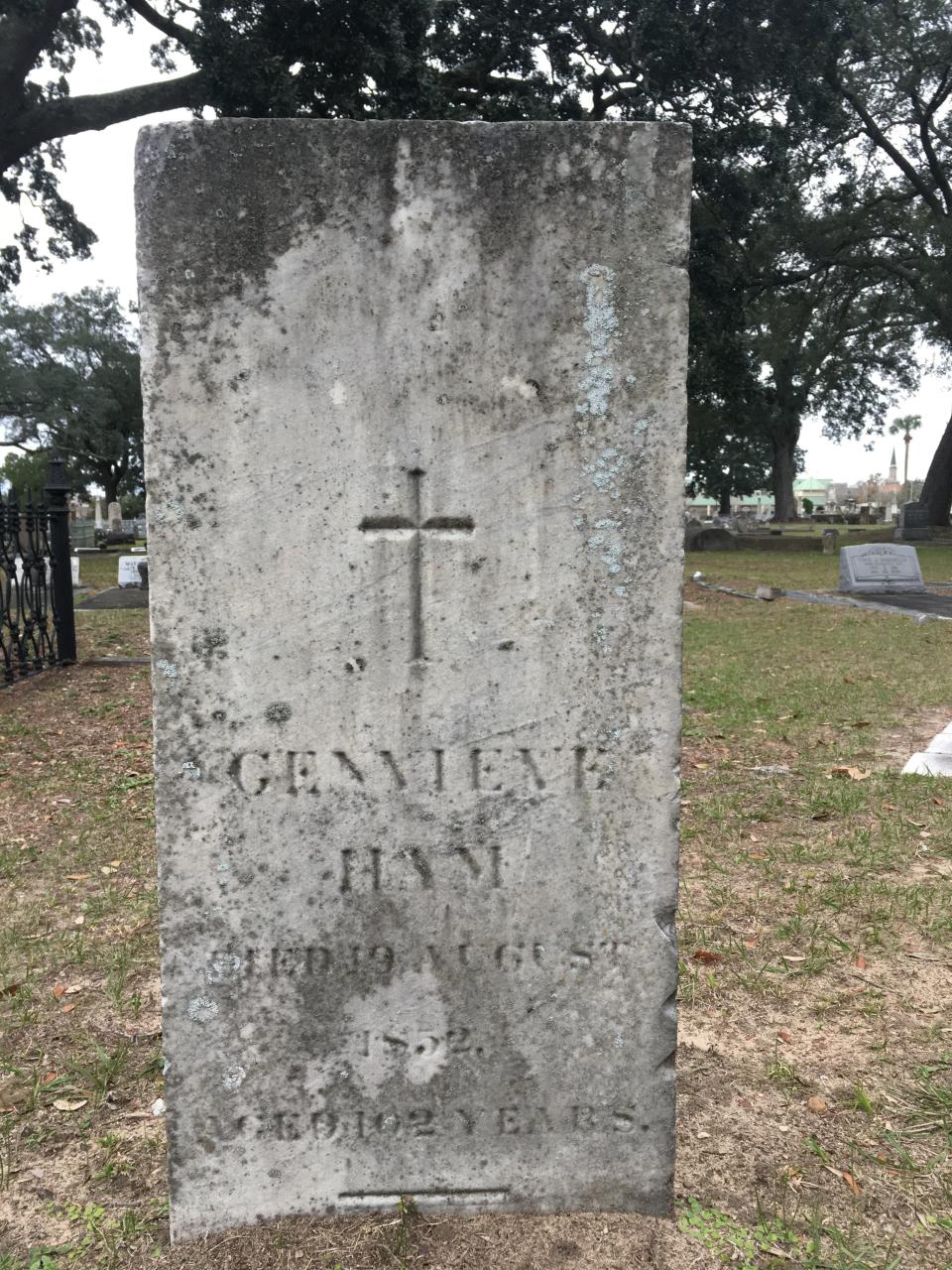Righting the past: Genevieve Ham, seamstress and one of Pensacola’s oldest residents, dead
Editor’s note: This is the 16th in a series of historical obituaries written today to honor the men and women of the past who were denied the honor at the time of their death because of discrimination due to their race and/or gender.
Genevieve Ham, longtime inhabitant of Pensacola, died on Aug. 19, 1852. She was born in Mobile, Alabama, between 1750 and 1770. Census records indicate her age was 82 at the time of her death. Her tombstone, however, notes she was 102 years old when she passed away.
Little is known of Ms. Ham’s family or her early life, but there are suggestive clues about her heritage. Free people of color and enslaved people often took the surname of the family with whom they were associated. The Ham family had been in Mobile since at least 1764 when a John Ham (Jambon in his native French) took the oath of allegiance to British King George III. Along with her French surname, Genevieve’s namesake − Sainte Genevieve, the patron saint of Paris − was also French.

Genevieve was among the approximately 1,000 Pensacolians recorded in the 1820 Spanish census. It listed her as a 50-year-old parda (mixed-race) woman working as a seamstress. Her neighbors were from diverse socio-economic, racial and ethnic backgrounds, including one of the town’s leading merchants, Juan de la Rua, and a fellow seamstress.
Righting the past: Their history wasn't just forgotten, it was buried. Today we tell their stories.
More: Righting the past: Leander A. Shaw, turpentine worker, murdered by mob
Genevieve and her neighbor were two of the roughly two dozen seamstresses in Pensacola. Like the town’s three trained tailors and one dressmaker, seamstresses usually fitted their creations to specific people, working by hand to make and alter custom-made clothing. Genevieve did not work from dress patterns, which were not readily available at this time. Instead, she relied on experience and, potentially, illustrations of the latest fashions that appeared in books and magazines beginning in the 1830s.
While most Pensacolians were, like Genevieve, not formally educated, they effectively managed their homes, engaged in business and participated in legal transactions like buying and selling property. Most Pensacolians also spoke more than one language. In this multicultural port town, French, Spanish, English, Haitian Creole and various West African dialects could be heard on the unpaved sandy streets.
Genevieve fully participated in Pensacola’s community life. She was a devout Catholic and a parishioner of the Parish of San Miguel (now the Basilica of St. Michael the Archangel). She also communicated with the wider world, being among the few women to receive mail in Pensacola during the 1820s.
Genevieve, like some free people of color, also became an enslaver. In 1834, she purchased a 50-year-old woman named Zelina for $250 from Domingo Torri. Nearly 20 years later, Genevieve noted Zelina’s “faithful service” to her.
Genevieve and Domingo had a close relationship. In the 1840s, he described Genevieve as his “faithful nurse.” Before the advent of professional nursing in the late 1800s, women categorized as nurses provided various services, including childcare, companionship and caregiving. Physicians and patients valued this essential care. Domingo eventually bequeathed a property to Genevieve whose rental income eased the final years of her life.
More: Righting the past: Viola Washington Edwards, pioneering health care provider, dead at 70
More: Mariah McQueen, beloved mother, laid to rest in John the Baptist Cemetery
By 1850, Genevieve owned real estate worth $1,000, an impressive sum at the time. The following year, she drafted a detailed will. She gave her sterling silver ladle and tea spoons to the four children of William A. and Epy Bell in appreciation for “the many kindly services rendered to me.” The rental property she received from Domingo Torri was to be sold and the proceeds, per his wishes, used toward the purchase of an organ and a clock tower for the Catholic Church. The last provision of the will emancipated Zelina and gave her Genevieve’s wardrobe. Both of these were valuable bequests, though freedom was undoubtedly priceless. Genevieve signed her will with an “X.”
By her request, Genevieve was buried in the Catholic Cemetery (St. Michael’s Cemetery). She was interred with a simple but elegant marble headstone adjacent to the family plot of the Brosnaham, Sierra and Renshaw families, who lived several doors down from her in 1850. As they had been in life, they remained neighbors in death.
Genevieve Ham lived a full life. Influenced by French and African cultural traditions, she experienced life under British and Spanish rule and witnessed Spanish Florida fold into the United States in 1821. A seamstress and a nurse, she knew and helped people of varied social statuses and backgrounds during her long life. Her final resting place, like the other graves in historic St. Michael’s Cemetery, is a physical reminder of the diverse people who wove the cultural and economic fabric of this city together and whose stories are worth remembering.
This article originally appeared on Pensacola News Journal: Genevieve Ham, seamstress, one of Pensacola’s oldest residents, dead

